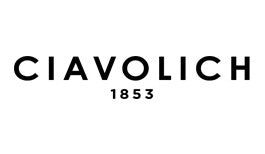Ciavolich
Ciavolich is a family business that has been cultivating vineyards in Abruzzo for several generations. The family's history is very old. Wool merchants of Bulgarian origin, the Ciavolichs arrived in Italy during the 16th century and settled in the village of Miglianico. The first winery was established in 1853, to make wine from grapes grown on their own land. As the generations passed, the estate expanded, especially in the beautiful Loreto Aprutino area. Today the estate is managed by Chiara, who carries on the family tradition with passion and expertise. The core of the estate has moved to Loreto Aprutino, in Contrada Salmacina, in one of Abruzzo's most vocated areas for viticulture.
The property covers a total of about 48 hectares, 35 of which are dedicated to vineyards and the rest to olive groves and arable land. The vineyards are cultivated half with the Abruzzi pergola system and half with espalier, with the presence of old plots from mass selections. The Loreto Aprutino area is located in a hilly area at an altitude of 250 meters, a few kilometers from the Gran Sasso massif and the Calderone glacier, as well as from the Adriatic coastline. The climate is mild and sunny, very bright and always breezy, with significant temperature ranges between day and night temperatures. The soils are clay and loamy in nature, with the presence of sands, very suitable for high-quality viticulture. In these favorable conditions, the vines bring to maturity perfectly healthy clusters, with very rich and intense aromas.
The vines historically present in the area are grown between the rows, particularly Pecorino, Trebbiano and Montepulciano. Thanks to a deep knowledge of the area, each variety is cultivated in the most suitable areas so that it can express itself at its best. At the end of harvesting operations, vinification takes place with minimal intervention, to preserve the varietal characters of the grapes. As for aging, different materials are used depending on the various cuvées: concrete tanks, stainless steel tanks, terracotta doliums and wooden barrels, just to promote micro-oxygenation and better evolution of the wines.
Ciavolich is a family business that has been cultivating vineyards in Abruzzo for several generations. The family's history is very old. Wool merchants of Bulgarian origin, the Ciavolichs arrived in Italy during the 16th century and settled in the village of Miglianico. The first winery was established in 1853, to make wine from grapes grown on their own land. As the generations passed, the estate expanded, especially in the beautiful Loreto Aprutino area. Today the estate is managed by Chiara, who carries on the family tradition with passion and expertise. The core of the estate has moved to Loreto Aprutino, in Contrada Salmacina, in one of Abruzzo's most vocated areas for viticulture.
The property covers a total of about 48 hectares, 35 of which are dedicated to vineyards and the rest to olive groves and arable land. The vineyards are cultivated half with the Abruzzi pergola system and half with espalier, with the presence of old plots from mass selections. The Loreto Aprutino area is located in a hilly area at an altitude of 250 meters, a few kilometers from the Gran Sasso massif and the Calderone glacier, as well as from the Adriatic coastline. The climate is mild and sunny, very bright and always breezy, with significant temperature ranges between day and night temperatures. The soils are clay and loamy in nature, with the presence of sands, very suitable for high-quality viticulture. In these favorable conditions, the vines bring to maturity perfectly healthy clusters, with very rich and intense aromas.
The vines historically present in the area are grown between the rows, particularly Pecorino, Trebbiano and Montepulciano. Thanks to a deep knowledge of the area, each variety is cultivated in the most suitable areas so that it can express itself at its best. At the end of harvesting operations, vinification takes place with minimal intervention, to preserve the varietal characters of the grapes. As for aging, different materials are used depending on the various cuvées: concrete tanks, stainless steel tanks, terracotta doliums and wooden barrels, just to promote micro-oxygenation and better evolution of the wines.














